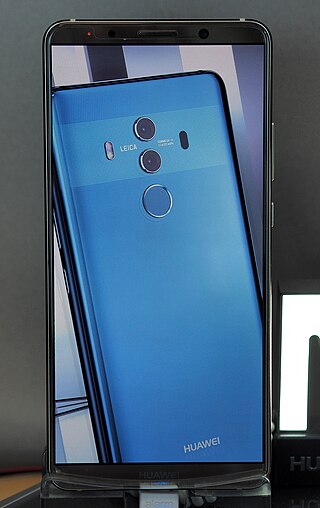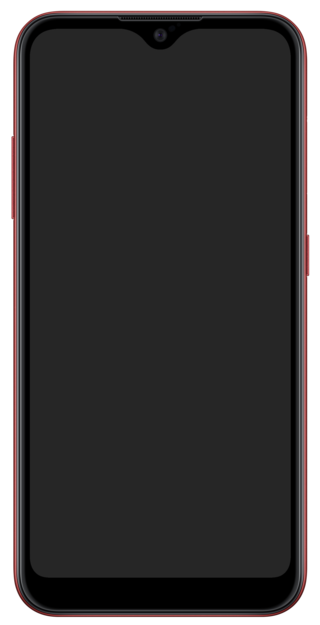
Secure Digital, officially abbreviated as SD, is a proprietary, non-volatile, flash memory card format the SD Association (SDA) developed for use in portable devices.

Some mobile phones support use of two SIM cards, described as dual SIM operation. When a second SIM card is installed, the phone may allow users to switch between two separate mobile network services manually, have hardware support for keeping both connections in a "standby" state for automatic switching, or have two transceivers to maintain both network connections at once.

HiSilicon is a Chinese fabless semiconductor company based in Shenzhen, Guangdong province and wholly owned by Huawei. HiSilicon purchases licenses for CPU designs from ARM Holdings, including the ARM Cortex-A9 MPCore, ARM Cortex-M3, ARM Cortex-A7 MPCore, ARM Cortex-A15 MPCore, ARM Cortex-A53, ARM Cortex-A57 and also for their Mali graphics cores. HiSilicon has also purchased licenses from Vivante Corporation for their GC4000 graphics core.

Huawei Mate, formally Huawei Ascend Mate, is a series of high-end HarmonyOS-powered smartphones produced by Huawei, and is one of their flagship products along with the Pura series.

The Huawei Mate 10, Huawei Mate 10 Pro and Huawei Mate 10 Lite are Android smartphones designed and marketed by Huawei as part of the Huawei Mate series. There is also a Mate 10 Porsche design, which has 256 GB of storage but is otherwise identical to the Mate 10 Pro. They were first released on 16 October 2017. Versus the predecessor Mate 9, the Mate 10 pro flagship phone has a faster processor with an integrated neural processing unit, a slightly larger OLED screen (6.0") with a taller 18:9 aspect ratio, a significantly longer battery life and a glass back construction. Chinese and international models are available in dual SIM configuration. It comes with Android 8 and a newer version of Huawei's EMUI interface. All Mate 10 models are unlocked and GSM only. Huawei phones, including the Mate series, are not sold or financed through U.S. carriers due to pressure from U.S. intelligence agencies, though they are available from independent and online retailers.

Huawei Mate 20 is a line of Android phablets produced by Huawei, which collectively succeed the Mate 10 as part of the Huawei Mate series. The flagship models, the Mate 20 and Mate 20 Pro, were unveiled on 20 July 2018 at a press conference in London.

The Samsung Galaxy A01 is a budget Android smartphone manufactured by Samsung Electronics as part of its A series. The phone was announced in December 2019 and released in January 2020. The phone come in the colors black, blue, and red. The phone features a 5.7-inch 720p touchscreen display, a dual camera setup, and comes with. One UI Core 2.0 over Android 10. A similar device, Galaxy M01, was first released in June 2020, which shares some of the features with the Galaxy A01.
The Nokia 8.3 5G is a Nokia-branded smartphone released by HMD Global, running the Android One variant of Android. It is HMD's first 5G phone, and was announced on 19 March 2020 alongside the Nokia 5.3, Nokia 1.3, and Nokia 5310 (2020). The Nokia 8.3 5G is claimed by HMD executive Juho Sarvikas to be the first smartphone, which is compatible with every 5G network, operational as of its announcement. It was released in September 2020.

Celia is an artificially intelligent virtual assistant developed by Huawei for their latest HarmonyOS and Android-based EMUI smartphones that lack Google Services and a Google Assistant. The assistant can perform day-to-day tasks, which include making a phone call, setting a reminder and checking the weather. It was unveiled on 7 April 2020 and got publicly released on 27 April 2020 via an OTA update solely to selected devices that can update their software to EMUI 10.1.
The Huawei MatePad Pro is an Android-based tablet designed and marketed by Huawei as part of their Huawei Mate series. It was announced on November 25, 2019 and was released on December 12, 2019.

The Samsung Galaxy A32 is a mid-range Android smartphone developed and manufactured by Samsung Electronics. It serves as the successor to the Galaxy A31. The phone is similar to its predecessor, but features an upgraded 64 MP main camera. The device also comes with a 5G variant with a stripped-down camera and screen, but with a faster SoC.

The Redmi K60 is a series of Android-based smartphones manufactured by Xiaomi. These phones were announced on December 27, 2022. The global version of K60 released as POCO F5 Pro.
Huawei Y6p is an Android smartphone manufactured by Huawei. Unveiled on 6 May 2020, they succeed the Huawei Y6s in the company's Y series line.

The Huawei Y3, also known as Huawei Y360, is an Android smartphone developed by Huawei and it belongs to the Y series. It was announced in March 2015 and released in June 2015.
The Huawei Y5 is an Android smartphone manufactured and developed by Huawei. It was announced and released in June 2015 and it belongs to the Huawei Y series.
The Huawei Y5c is an Android smartphone manufactured and developed by the Chinese company Huawei from the Y series. It was introduced in July 2015. In India, the smartphone was sold under the name Honor Bee.
The Huawei Y5 lite is an entry-level smartphone developed by Huawei and belonging to the Y series. It was first announced in December 2018 and was released on January 2, 2019. The Y5 lite is a simplified version of the Y5 2018, featuring a less advanced main camera, less RAM, and running on Android Go.
The Huawei Y5 (2019) is a series of entry-level Android smartphones developed by Huawei and belongs to the Y series. It was first announced and released on April 24, 2019.












